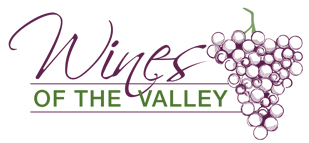This Wine is Mine: Art of the Blend
By KARL KLOOSTER
Of the News-Register
Winemakers agree that blending is more art than science. Though certain basic structural elements must be present, what constitutes an ideal blend from several different lots, even of the same variety, will be influenced by subjective personal preference.
As with any wine evaluation, however, several tasters can come to consensus on what constitutes a good blend. Although professionals are obviously better at it, even novices with good palates and some wine knowledge can do it.
Proof positive played out in a story from Trisaetum Winery on Ribbon Ridge.
The winery had offered a case of wine at auction with the special inducement of letting the winning bidder do his own blending of the final cuvŽe. And this was the day.
The lucky couple had waited, appropriately enough, nine months to oversee the birth of their new baby.
Trisaetum owner and head winemaker James Frey wanted to offer something for the auction that was wine-oriented, but went a step beyond. He hit on letting the winning bidder do the final blending. And he was determined to make the experience special.
He chose nine pinot noir lots from the 2010 vintage and prepared a diagram showing for each the tank number and type, vineyard and block source, clones, barrel maker, barrel age and wood grain, and toast.
Being an artist both in winemaking and on canvas, Frey defines his approach from the standpoints of both palette and palate. That is, he experiments with varying treatments, or palettes, in order to come up with a range of palate-pleasing possibilities.
He explained to the buyers that the winemaker's palette has nine basic components. In the vineyard - soil, microclimate and clone. In the processing - vessel, yeast and fermentation protocol. In the barrel finishing - cooper, age and grain, and toast.
Going first to the cellar, they tasted from nine vessels and chose four lots. Samples of those four were brought to the lab, where combinations were blended in varying percentages.
Though these were young wines, yet to take on additional characteristics that only time and maturity bring, the differences were striking. One blend resulted in forward, floral aromas, while another was rendered totally dumb, with no nose whatsoever.
In the end, one of the four samples was eliminated entirely, and the three remaining ones were blended 50, 25 and 25. The result proved exceptional, especially after a break for lunch allowed additional breathing time.
Such a scenario may seldom play out in Oregon Wine Country. But it demonstrated that good wine, judicious guidance and some enthusiastic wine appreciation are capable of producing a blend on which any winery would be proud to put its label.
The buyers waited almost another full year to have their wine bottled. before they can have it bottled for them.
Private labels are not all that unusual in Oregon, or elsewhere, for that matter. On a case by case or barrel by barrel basis, wineries around the state agree to make wine for restaurants, wholesalers and retailers.
In most instances, the winemaking process is controlled by the winemakers from start to finish, but some buyers want to participate in the blending. They enjoy being able to say, with some pride of ownership, that they had a hand in making the finished product.
Less often, avid wine buffs will buy a barrel on condition they be allowed to participate in the blending. As with the Trisaetum offering, the risk is not all that great, and the experience can be quite rewarding.
The most crucial difference in dealing with pinot noir is that you are not blending with other varieties, only with other clones of pinot noir, or lots of the same clone grown in different blocks of the same vineyard, or lots of the same clone grown in different vineyards.
In other words, unlike a blend of syrah and grenache or chardonnay and semillon, or multiple varieties such as are often present in Bordeaux blends, the distinctions in blends of pinot noir are usually much more subtle.
Taking the demands of blending a step farther, gaining a familiarity with what aroma and flavor characteristics the terroir of an individual vineyard or even blocks within that vineyard can be expected to impart to pinot noir takes years of working with them.
Those are all good reasons to limit non-professional involvement in a winemaking discipline that, perhaps more than any other, requires as much artistry as science.
Related Content
-
Read more...
3-Intro: The Art of Pinot Noir
Oregon Pinot Noir is a complex wine made from a finicky grape grown in an uncertain climate. It's a challenge ...
-
Read more...
Video Gallery: Chapter 3, Art of Pinot Noir
Blending the perfect Pinot Noir / Trisaetum Winery Video courtesty of "Cooking Up A Story" James ...
-
Read more...
Winter is new wine's most fragile time
December is one of the most critical months in striving to make great pinot noir.
-
Read more...
A truly great 2008 for pinot noir
Nation's wine critics all raved over Oregon's special 2008 pinot noir vintage



